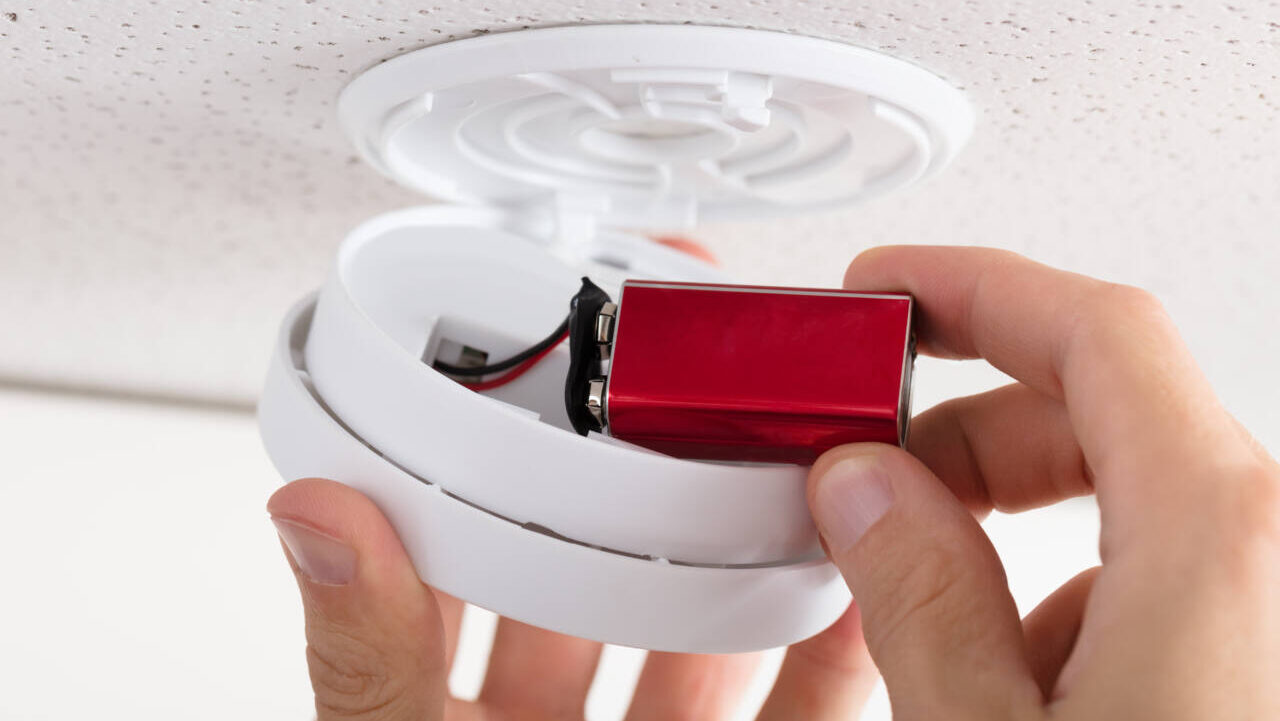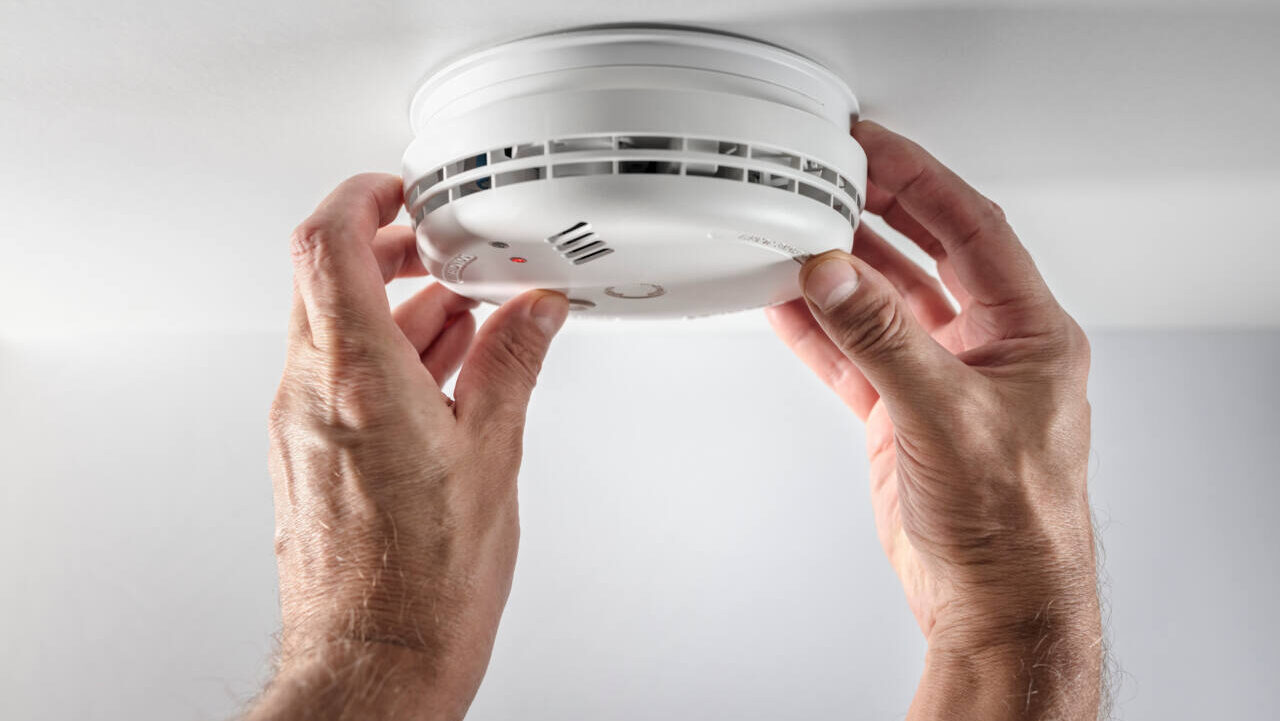We’ve all been there. It’s 2 a.m. and you hear an eardrum-piercing beep. Your first reaction is to cover your head with a pillow and pretend it never happened. Eventually the slow chirping takes permanent residence in your brain, and you have no choice but to get up and deal with it.
So how exactly do you deal with a beeping smoke alarm? We’ve got you covered.
Why Is My Smoke Alarm Beeping?
Before you reset your smoke alarm, you need to understand why it’s beeping to begin with. Daniel Majano, program manager of the Electrical Safety Foundation, with support from the National Fire Protection Association, explains that a continued set of three loud beeps means that there’s smoke or fire in your home. “Get out, call 9-1-1 and stay out,” says Majano.
An occasional beep signals that your smoke alarm needs attention. “A single chirp every 30 or 60 seconds means the battery is low and must be changed,” Majano says. Be sure to have some 9V batteries on hand for this situation.
Ryan Park, senior product director at First Alert Safety and Security, notes that there are a few other potential issues that can cause your smoke alarm to beep. For example, having new batteries installed incorrectly into the alarm can prompt it to beep.
“Another common reason is when the battery drawer is left slightly open,” says Park. “Similarly, a battery pull tab that’s still in place can be causing disruption.” Park also warns that some smoke alarms may beep every minute for up to 15 minutes if the Silence/Test button is accidentally pressed.
Park warns the location of your smoke alarm can also potentially cause it to chirp or beep. Park notes that when you install your alarm, you’ll generally want to avoid these areas and situations:
- High humidity areas. “Ionization smoke alarms in particular can be susceptible to this, as they will sense humidity in a similar style of sensing smoke,” says Park.
- Near heating and air-conditioning vents. “HVAC vents can act as natural disruption, as they’ll interfere with an alarm’s sensing chamber,” he says.
- Dusty areas. “Dust can play a huge role in affecting your smoke alarm,” says Park.
- Path of direct sunlight. “This is especially true for photoelectric alarms, as bright sunlight entering the chamber can interfere with the sensor,” he says.
- Within 20 feet of combustion particles. “Combustion particles form when fuel burns,” explains Park. “Common sources of combustion particles in the home include stoves, heaters, furnaces, water heaters and space heaters. In small homes where 20-foot distance is not possible, place the alarm as far away from the fuel-burning sources as possible.”
- Within 5 feet of any cooking appliance. “Air currents can draw cooking smoke into the smoke sensor and cause nuisance alarms,” Park says.
How to Reset a Smoke Alarm
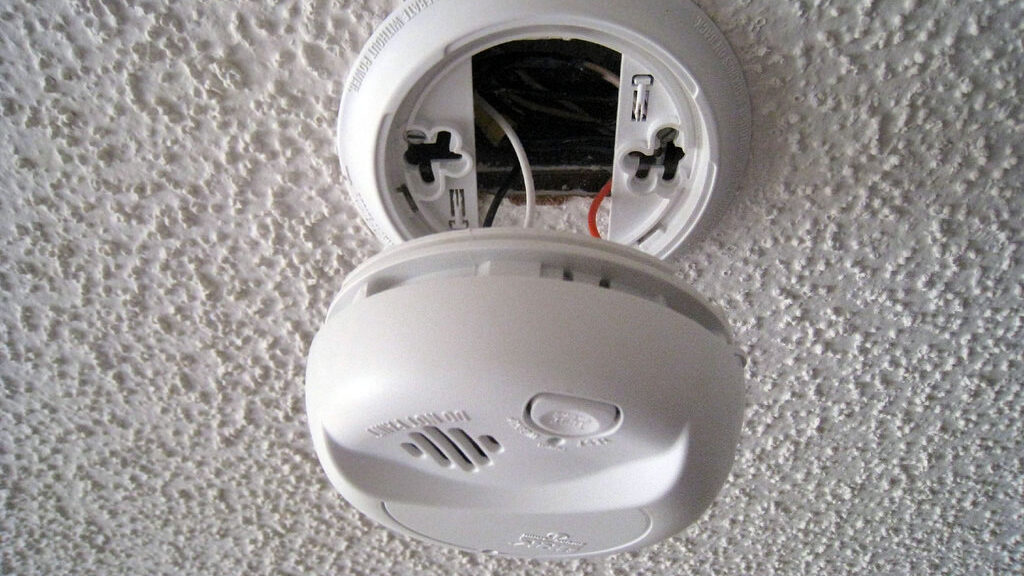
The exact steps for resetting your smoke alarm depend on whether you’re working with a battery-powered or hardwired alarm.
How to Reset a Battery-Powered Smoke Alarm
If your smoke alarm is powered by a battery (typically a 9V), rather by a wire that’s plugged into your power grid, Majano recommends that you start by making sure that the batteries are working, that the device is less than 10 years old and that there’s no dust buildup on or around the alarm.
Park provides the following steps for resetting a battery-powered smoke alarm:
- Remove the alarm from your ceiling or wall.
- Open the cover and remove the battery.
- Press and hold the Test button for 15 to 30 seconds. This will fully reset the smoke alarm and drain any charge left inside.
- Insert the new battery and close the battery compartment.
- Clean the unit with a microfiber cloth or a can of compressed air. Vacuum the outside with a soft brush attachment.
- Push the Test button. The test sequence will be very loud, but will tell you the alarm is working properly.
How to Reset a Hardwired Smoke Alarm
If your smoke alarm is attached to your ceiling via a wire that you have to unplug before you can take it down, Park recommends the following steps:
- Disconnect the alarm from any wiring.
- Hold the Test/Silence button for 20 seconds.
- Reconnect the wiring and your alarm should now be reset.
How to Maintain Your Smoke Alarm
Majano recommends that you test your smoke alarm once every month by pressing the Test button. You should hear a loud beep. If the alarm doesn’t sound, change its battery or replace the whole unit if it’s over 10 years old. Most smoke alarms will have a paper label on the back that shows the date they were manufactured.
Park notes that it’s also important to maintain your smoke alarms to keep them working at their best.
“While our First Alert smoke alarms are designed to be as maintenance-free as possible, there are a few simple things you must do to keep them working properly,” he says. In addition to regularly testing your alarm, you need to clean the smoke alarm at least once a month by gently vacuuming the outside using your vacuum’s soft brush attachment. “Never use water, cleaners, or solvents, since they may damage the unit,” says Park.
If your smoke alarm becomes contaminated with dirt, dust or grime, and you can’t clean it to stop unwanted alarms, you should replace it.
Smoke Alarm Replacements
Majano explains that smoke alarms with non-replaceable batteries are designed to work for 10 years. “If the alarm chirps, warning that the battery is low, replace the entire alarm,” he says. Should you have a smoke alarm that uses any other type of battery, you should replace the battery at least once a year. If the alarm chirps, replace the battery sooner. “All smoke alarms must be replaced after 10 years or if they don’t respond when tested,” says Majano. “Look on the back of the smoke alarm for the date.”
Investing in new smoke alarms is essential in your home’s fire safety, so be prepared to buy alarms every 10 years or sooner if one of your alarms stops working. Keep reading for some of the best smoke detectors on the market.
First Alert Ionization Smoke Alarm

The First Alert Ionization Smoke Alarm is a battery-operated alarm that’s easy to install. Its ionization sensor can detect smoke from flaming fires, including paper and grease fires. It also features an 85-decibel alarm and an end-of-life signal that alerts you when it’s time to replace the alarm at the end of its 10-year life cycle.
Kidde Smoke Detector
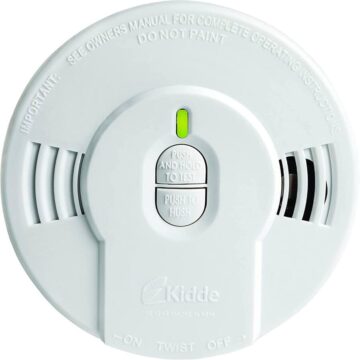
If you have a hard time remembering to replace your smoke alarm’s battery each year, the Kidde Smoke Detector can help. Its 10-year lithium battery doesn’t need to be replaced. The alarm’s ionization sensor can detect invisible fire particles, and its 85-decibel alarm is loud enough to quickly alert anyone in your home (that’s roughly the same as the volume of a lawn mower). It also features Test and Hush buttons that you can use to easily silence a false alarm triggered by issues like cooking smoke or shower steam. The alarm features a replacement alert that signals when it’s time to replace the unit at the end of its life.
First Alert Hardwired Smoke and Carbon Monoxide Detector
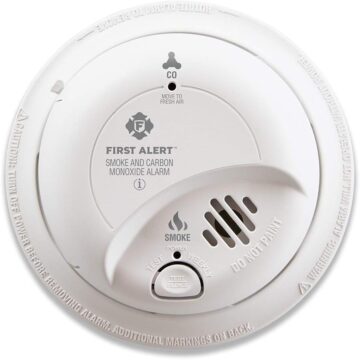
If your home is set up for a hardwired smoke alarm system, the First Alert Hardwired Smoke and Carbon Monoxide Detector will do two jobs at once. It also has a side-loading battery backup compartment in case of power outages. It combines an ionization sensor with a carbon monoxide detector, maximizing the value you get from this unit. An 85 decibel siren helps ensure that you’re alerted if there’s a threat.
How to reset a smoke alarm that won’t stop beeping originally appeared on Simplemost.com


